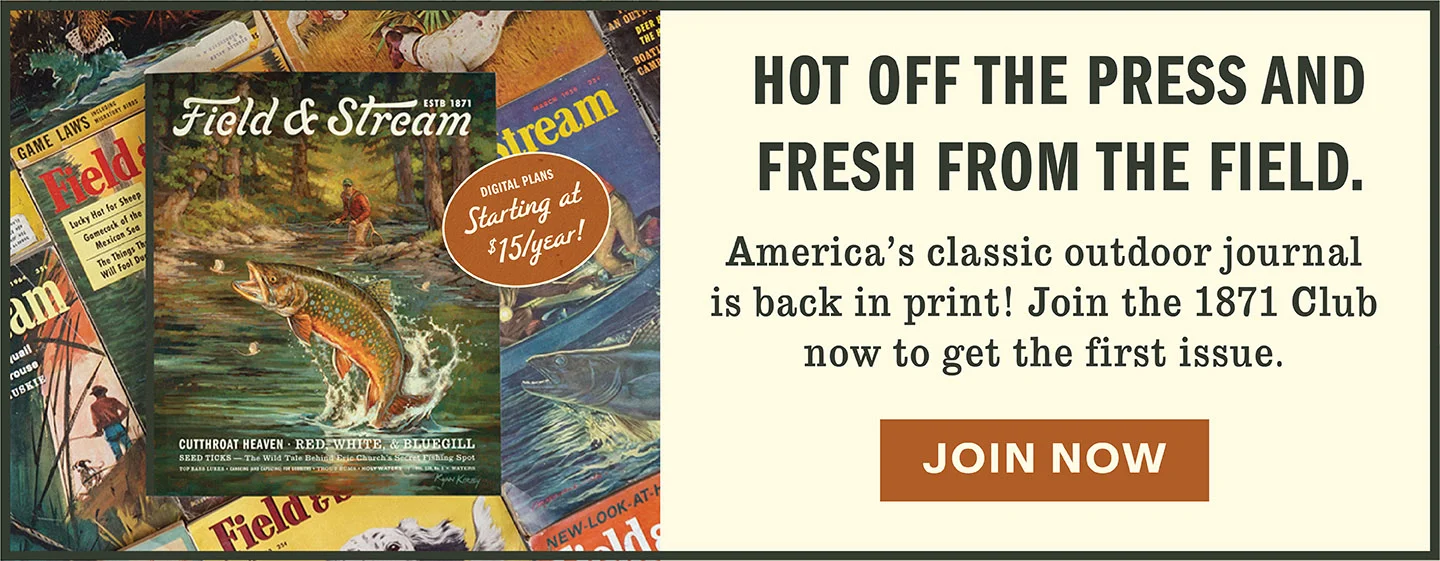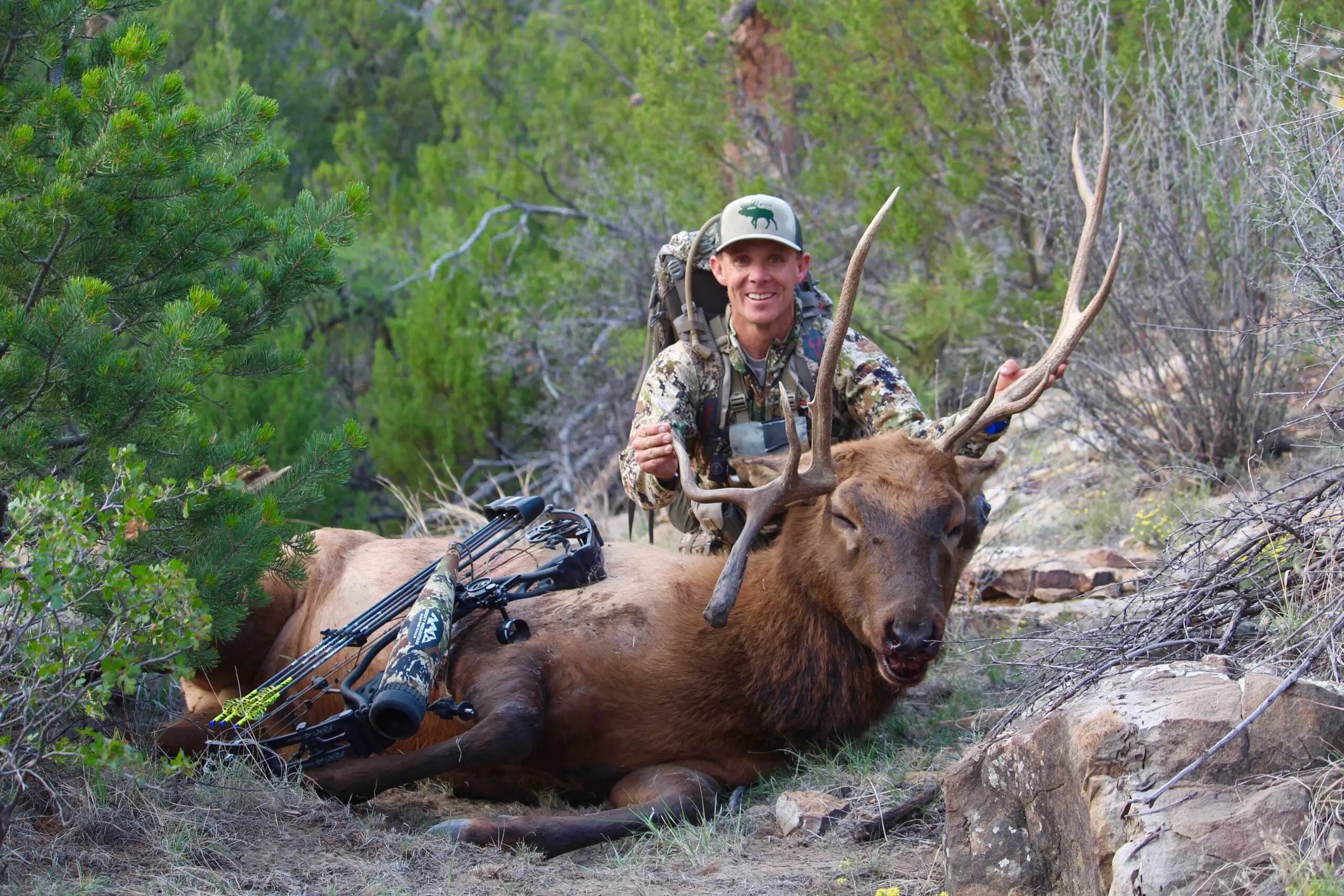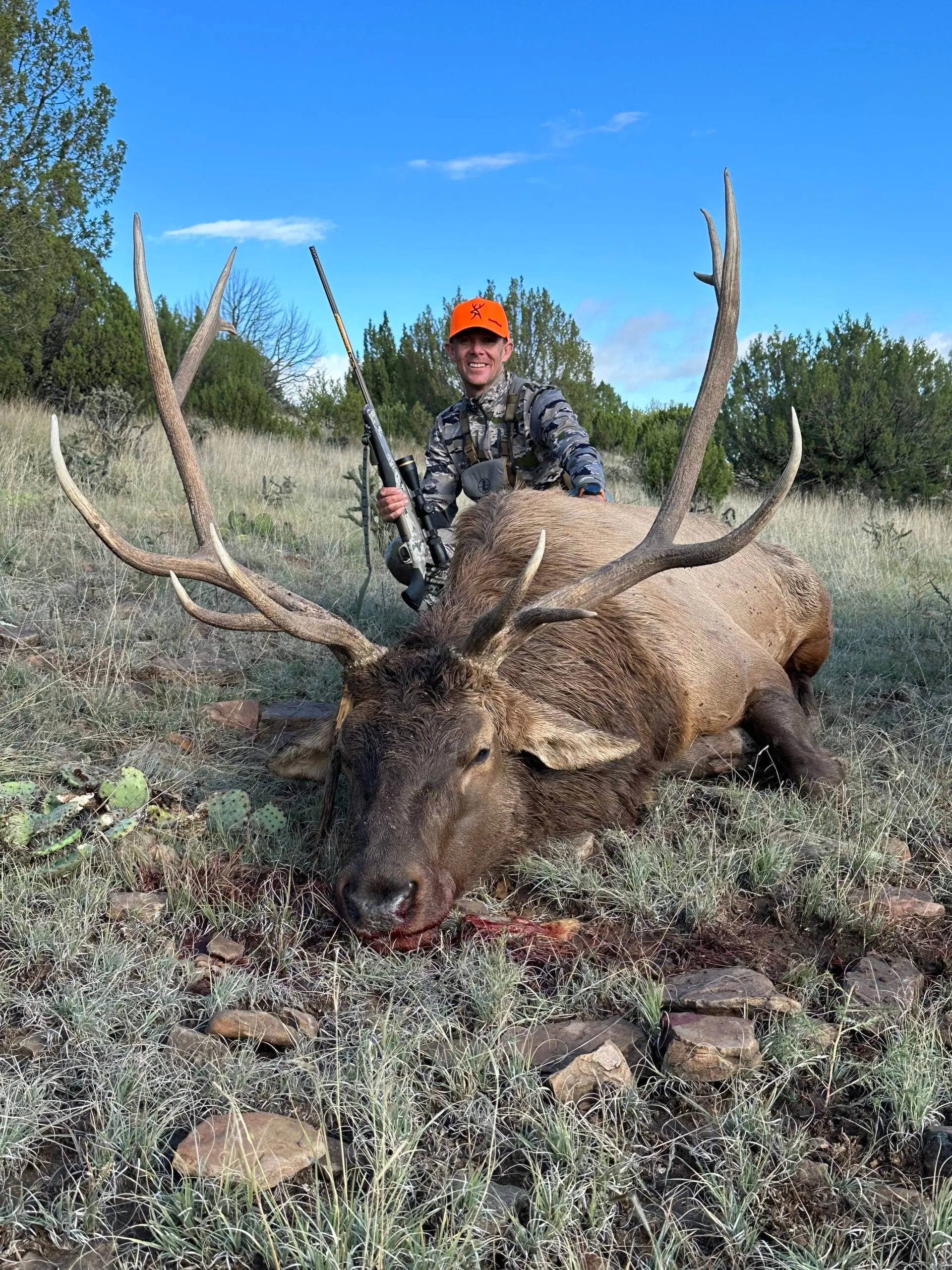For many hunters, elk are the pinnacle of the big game world. They are big, wear heavy antlers, and live in some of the most beautiful wilderness North America has to offer. They can take hunters up above the timberline or be chased in the hills of lower elevation. But no matter where you draw a tag, elk hunting is one of the most exciting and accessible big game pursuits
that America has to offer.
While elk populations across the country are stable, elk hunting success rates on public land in over-the-counter units are low—approximately 10 to 15 percent
. That statistic speaks to the difficulty of taking an elk with an OTC tag on public land, whether it be with a bow, rifle, or muzzleloader. The good news is that some states, like Colorado, still offer good OTC opportunities. The real work lies in finding a place that gives you the best chance at success, and then converting your tag into hundreds of pounds of pure protein.
So, where do you start? The short answer is right here. We put together this Elk Hunting 101 guide to get you off on the right foot for planning your first hunt. Below we go over the basics like elk habitat, tag allocation, and the different methods and tactics that hunters use to kill bulls. Here’s what you need to know to start planning your next elk hunt.

_Learn how to subscribe to the new Field & Stream magazine here!
_
Where Do Elk Live?
Most of the world’s elk population dwells in the Rocky Mountain West. While Colorado boasts the world’s largest elk population
at just under 300,000 strong, states like Montana, Idaho, Wyoming, Utah, Nevada, Arizona, and New Mexico also hold very strong elk numbers. The most popular habitat for hunting elk is steep, rugged mountain terrain mixed with deep, dark timber, and sparse, pine-dotted mountainsides sprinkled with aspens.
However, elk also thrive in lower-elevation landscapes, especially in the West, where prairie grasses provide year-round sustenance and dense pockets of cedar and pinon give elk enough cover. Thanks to the tireless work of the Rocky Mountain Elk Foundation
and many state game and fish agencies, elk populations are starting to boom in eastern states like Kentucky and Pennsylvania. Elk can also be found in Nebraska, the Dakotas, and several other states.

This young bull rolled in the mud and bugled for over 30 minutes while the author looked on. Jace Bauserman
Where Should You Hunt Elk?
Before looking into OTC Tags, OTC Tags with Caps, and Limited-Entry draw tags, you need to think about the terrain you want to hunt elk in. Be honest with yourself. In the West, where elk hunting is most common, hunters can pursue elk from an elevation as low as 4,000 feet to well above the timberline. You need to decide what type of experience you want. Do you want a lowland hunt in milder terrain that will be easier on the body and more conducive to getting a harvested animal out quickly and easily? Or, do you crave a high-country adventure where bulls live in steep, rocky drainages that most hunters are reluctant to go?
The good news is you can design your elk hunt around your expectations and physical condition. You can also go the guided route and enlist the help of an outfitter who will take you onto private or public land. An elk outfitter will arrange your travel (horses, UTV, ATV, truck, etc.), and help with packing out your harvested animal.
Get In The Elk Draws
Over-the-counter elk tags are disappearing. Colorado still offers them for specific units for hunt methods of archery and second and third rifle seasons, but most states that previously offered OTC tags have switched to OTC with Caps. This means only a certain number of tags are allocated for specific areas. Take Idaho, for example. Not long ago, non-resident hunters could purchase one or more OTC tags for various units even once the season started. Now, the state caps the number of licenses per hunt unit and sells those tags on a specific date each year.
Most western states and others that harbor huntable elk populations host an annual big-game draw. Some states use preference points, which means the more years you put in for the state’s draw, the better chances you have of pulling a coveted limited draw tag. Other states use a lottery-style system. The point is, you can hunt elk every year somewhere and, during specific years, have a quality draw tag or two if you apply in multiple elk-rich states.
Archery Elk Hunting
Over half of my elk hunts throughout 20-plus years of chasing bulls have been with a stick and string. Here are the pros and cons of archery elk hunting out West.
Pros
More accessible to draw a tag
OTC opportunities
The elk are rutting
Weather is favorable
Less hunting pressure
Cons
You have to get super close for a clean shot
Warm weather can hinder activity and make it hard to get a harvested animal out
Less than 10 percent harvest success rate
Constantly changing winds and thermals can make closing the deal extremely challenging

The author took this bull with funky-looking antlers during Colorado’s archery elk season. Jace Bauserman
Archery elk hunting is trendy right now. However, even in OTC units, the woods aren’t buzzing with humans like during rifle season. The key to having a successful archery elk hunt is time. I give myself 10 days for an archery elk hunt and typically try to be in the woods before or after peak rutting when hunting on an OTC tag or easy-to-draw tag. Peak rut usually occurs from September 10-25 in most elk locales, and this timeframe is when the woods are the busiest. If I draw a really good limited tag, I will hunt during the peak rut.
My reason for hunting around the rut with an OTC tag is that the woods are less crowded. Everyone wants to hunt screaming bulls, and I’m no different, but I’ve had excellent success during the first two weeks of September hunting bulls over wallows from treestands and natural ground blinds. I’ve also hit windows when Mother Nature ushers in an early September cold front, and the woods go bonkers with bugling bulls.
Later in the season, filled tags, colder weather, and less rut activity keep human presence to a minimum. During this time of year, calling still works exceptionally well, and if a fresh blanket of snow hits the ground, tracking and stalking in on a mature bull is possible.
Rifle Elk Hunting
Rifle elk hunting allows for extended ranges and later seasons. Here are the pros and cons as well as a general overview of chasing elk with a long gun.
Pros
Extended range
Snow can force elk low and congregate them
Multiple hunt tactics can be utilized
Colder weather means less chance of meat spoilage
Improved harvest percentage
Less chance of wind and thermals messing up the hunt
Cons
More hunting pressure
More competition for draw tags
Cold weather and harsh conditions are likely as the season goes on

The author took this bull at 364 yards using Browning’s new X-Bolt 2 Speed in 300 PRC. Jace Bauserman
When hunting elk with a rifle, you spend a lot of time behind your optics. Ensure you have quality 10- to 12-power binos
that mount to a tripod and a top-tier spotting scope
. Finding elk in rifle season often leads to a punched tag if you’ve done pre-hunt work and spent time behind your gun. I recommend being able to shoot accurately to 400 yards.
Finding elk during rifle season depends on season dates and weather. Typically, I see isolated rut activity out West during the first two weeks of October. Some bulls are still with herds, while others have passed on their genetics and have gone solo or rejoined a boy band. Calling can still be a solid hunt tactic during this time. However, I work to find glassing areas that allow me to see a combination of multiple isolated mountain meadows where elk will feed during the morning and evening.
Often, post-rut elk want to pack on the pounds and will linger longer on food sources. Then, they will travel a short distance to bed. They want to conserve those calories. If hunting pressure is low and I have an area to myself, I develop a food-to-bed pattern and then move in. If hunting pressure is heavy and I see elk feeding in the morning, I either move in on them in their beds or get close, post-up, and intercept them when they return for dinner.
Later in the season, when snow is heavy, I concentrate on lower-elevation areas. I often find mature bulls hiding in isolated coulees and deep, nasty timber pockets in open areas full of nutrient-rich grass. It doesn’t take much to hold a late-season bull or two. As long as elk aren’t getting pressure and have cover, water, and, most importantly, abundant food, they can stage and live in areas that don’t look like typical elk habitat.
When weather conditions are icy, and snow covers the ground, I concentrate on south-facing slopes where snow melts quickly, and food is more readily available. Elk, especially during November and December, often bed in the open on south-facing slopes where they can soak in the sun.
Regarding the best rifle caliber for elk, I suggest not going small. The 6.5 Creedmoor and 6.5 PRC are popular flat-shooting rifles, but elk are big, bold, and extremely tough. I highly recommend the following calibers for elk: 300 PRC, 300 Win. Mag., 7 PRC, 28 Nosler, and 7mm Rem Mag. Of course, there are others, but pair these calibers with a quality bullet in grain weights between 150 and 212, and you’ll be pleased with the results.
Final Thoughts
The most important part of planning an elk hunt is first identifying areas that hold good numbers of elk, offer OTC tags, and are manageable for your physical condition. I spend loads of time on state game and fish websites. Most have elk-hunt planners, draw information, and public land maps. It is also worth considering GoHunt’s Insider
program, especially for first-time elk hunters. This program helps filter and identify units based on public land percentage, specific seasons, success rates, and more. From there, e-scouting and boots-on-the-ground scouting in the off-season can help get a feel for the terrain.
![Field & Stream [dev]](https://images.ctfassets.net/fbkgl98xrr9f/1GnddAVcyeew2hQvUmrFpw/e4ca91baa53a1ecd66f76b1ef472932b/mob-logo.svg)





